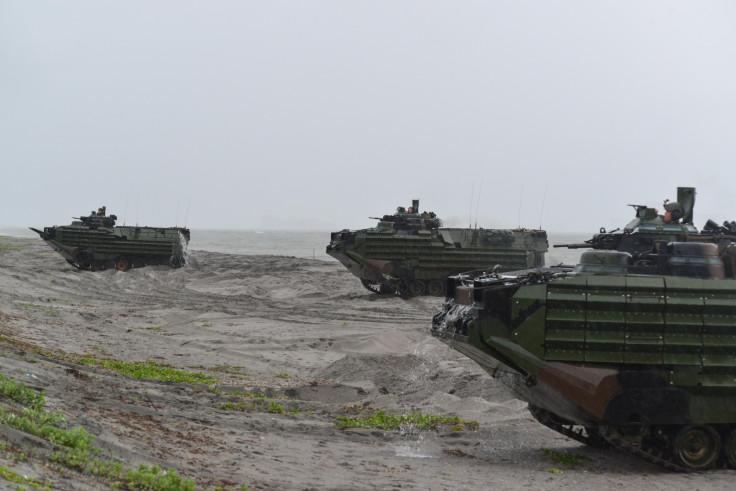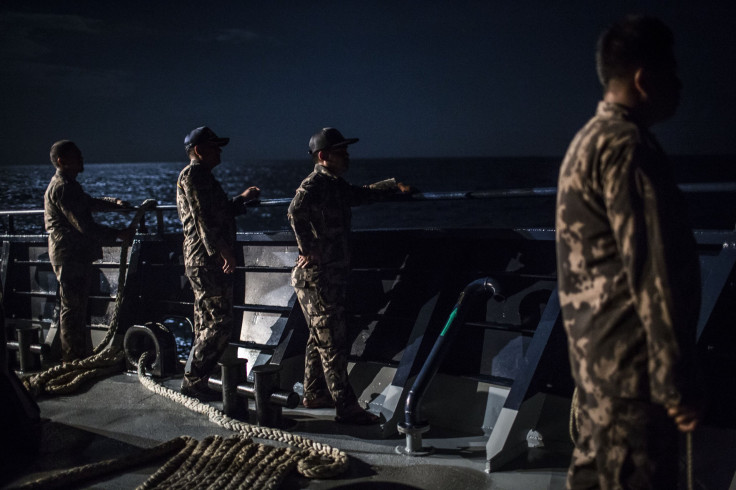Will China Go To War With US? Military, Defense Building Up In Disputed South China Sea Region

In yet another contentious move in the South China Sea, China has expanded its military and defense structures in the disputed territory. The country has upgraded its infrastructure in the northern areas of the sea and near the Paracel Islands, the Asia Maritime Transparency Initiative at the Centre for Strategic and International Studies, a Washington, D.C. based think tank, said Wednesday.
Satellite images revealed 20 outposts of increased militarization on at least eight islands.
“Five of these islands contain helipads, with Duncan Island housing a full helicopter base,” the think tank said on its website. “And the largest of the Paracels, Woody Island, sports an airstrip, hangars and a deployment of HQ-9 surface-to-air missile batteries.”

The development came just days after Chinese Foreign Minister Wang Yi told the U.S. it needed a history lesson when it comes to the dispute in the South China Sea. Multiple regions, including China and Japan, have continued to lay claim to the territory, sparking accusations of militarization and disputes over jurisdiction. Wang cited agreements made during World War II that handed the islands to China.
However, China has repeatedly promised it would not militarize the islands it created in the South China Sea. But in December, China’s defense ministry responded to a report by the same U.S. think tank alleging that Beijing had placed weapons on some of the islands.
“The necessary military facilities are mainly for self-defense,” China’s defense ministry said. “When someone is flexing muscles at your doorstep, wouldn’t you prepare a slingshot?”
Fears of a war between the U.S. and China over the contentious territory have spread as jurisdiction disputes continue. In January, White House Press Secretary Sean Spicer said the U.S. would continue trying to thwart China’s military expansion in the South China Sea, while Lu Kang, a senior Chinese foreign ministry official said the jurisdiction is “not for the United States” to decide.
© Copyright IBTimes 2025. All rights reserved.






















